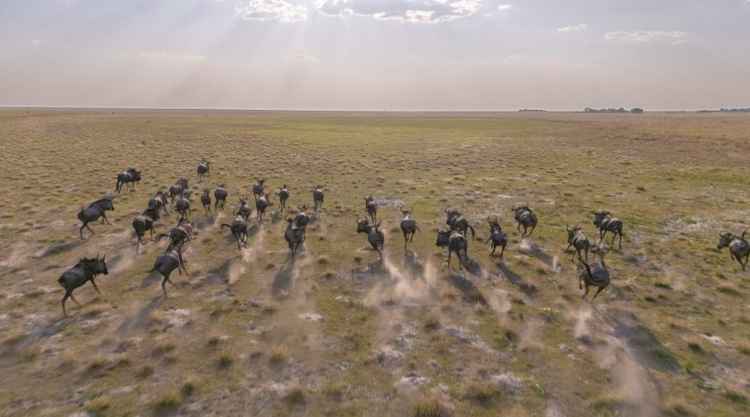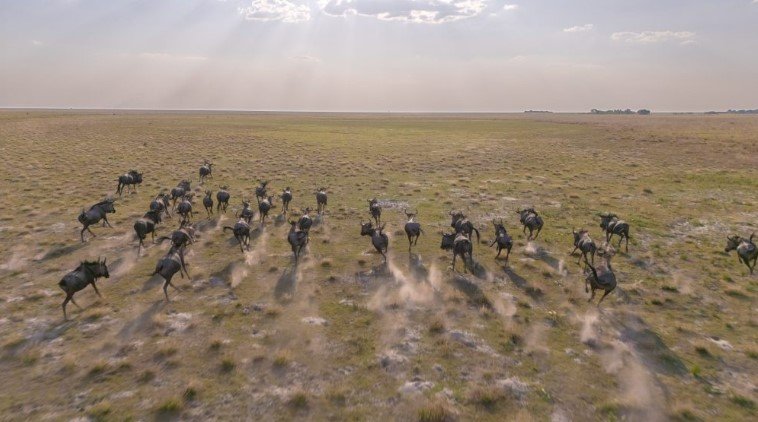The Annual Journey of Survival
Every year, deep in Zambia’s Western Province, an extraordinary natural phenomenon takes place in Liuwa Plain National Park - the second-largest wildebeest migration in the world. This event sees over 30,000 wildebeests, joined by zebras and other wildlife, trekking across the park’s vast, open floodplains. It’s a spectacle that offers not only incredible sights but also a profound connection to the rhythm of Africa’s wilderness.


Between October and December, the rains arrive, turning the dry, cracked earth into lush, green pastures. This triggers the wildebeests’ instinct to move in search of food and water. Watching the herds stretch across the horizon is a powerful sight, and Liuwa’s uninterrupted views make it feel like you’re right in the middle of the action. Mothers give birth to their calves during the migration, and the young animals must quickly learn to navigate this new, unknown world. Alongside them lurk predators like hyenas and the park’s famed lion pride, descendants of the legendary lioness Lady Liuwa.

A Wildlife Spectacle Unlike Any Other
What makes Liuwa’s migration truly special is the raw, unspoiled beauty of the landscape. Unlike other parks, Liuwa isn’t overrun with visitors or vehicles. Here, you won’t find crowds jostling for a good view—it’s just you, the endless plains, and the thunderous sound of thousands of hooves pounding the earth.
The park is also a haven for birdlife, with species like crowned cranes, pelicans, and wattled cranes gathering in huge numbers. For birdwatchers, this is a dream come true, as Liuwa boasts one of the world’s largest populations of wattled cranes. Watching these majestic birds soaring above the plains, alongside the wildebeest and zebra herds, feels like witnessing a carefully orchestrated symphony of nature.

The Charm of Liuwa’s Remote Wilderness

Liuwa Plain’s remoteness adds to its charm. Getting there involves a bit of effort, but the reward is unmatched. Accommodation options like the luxurious King Lewanika Lodge provide all the comforts you need while keeping you immersed in the wilderness. Guided game drives allow you to track the migration, and you’ll find that every day offers something new—whether it’s spotting a newborn calf take its first steps or a lion stalking its prey.
This annual migration is more than just a spectacle; it’s a reminder of the delicate balance of life in the wild. Liuwa Plain National Park’s successful conservation efforts, led by African Parks and local communities, ensure that this incredible event continues for generations to come. For those who value authentic, unfiltered wildlife experiences, Liuwa Plain’s wildebeest migration is a must-see.









